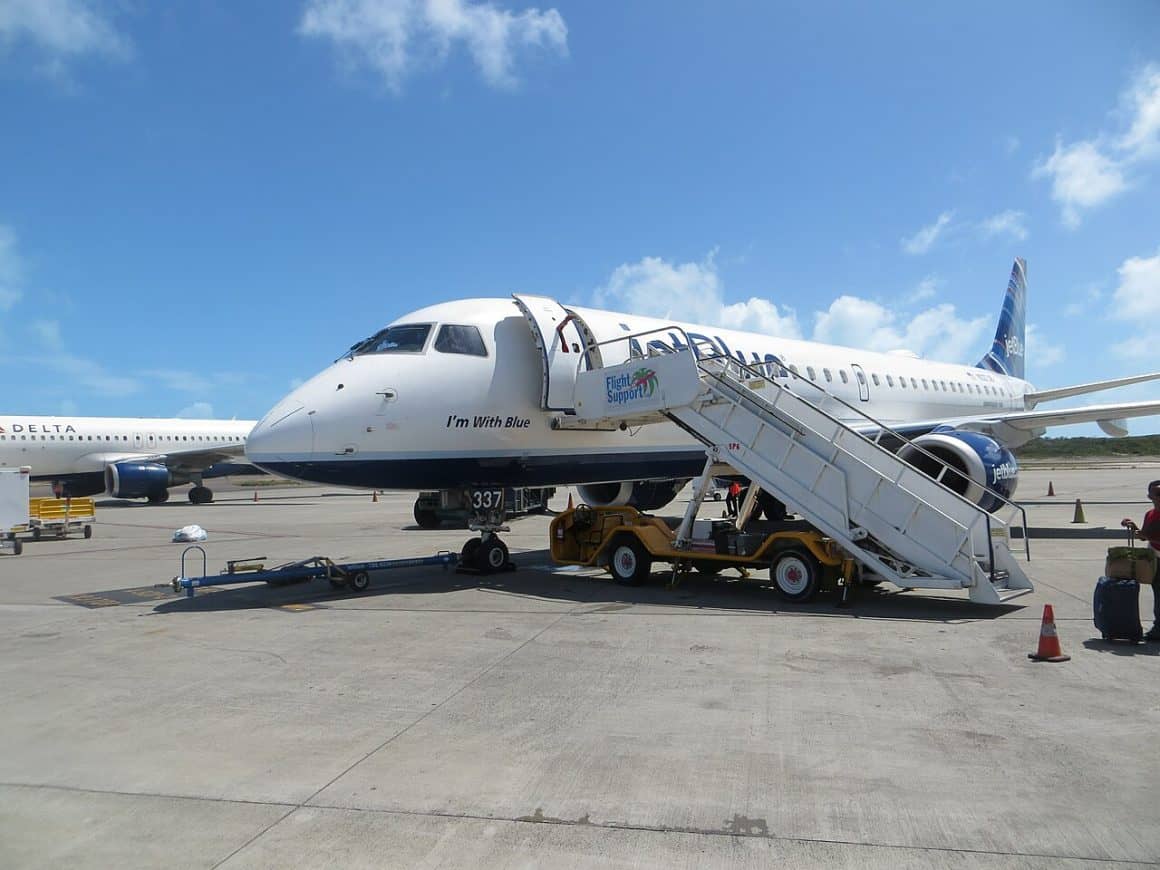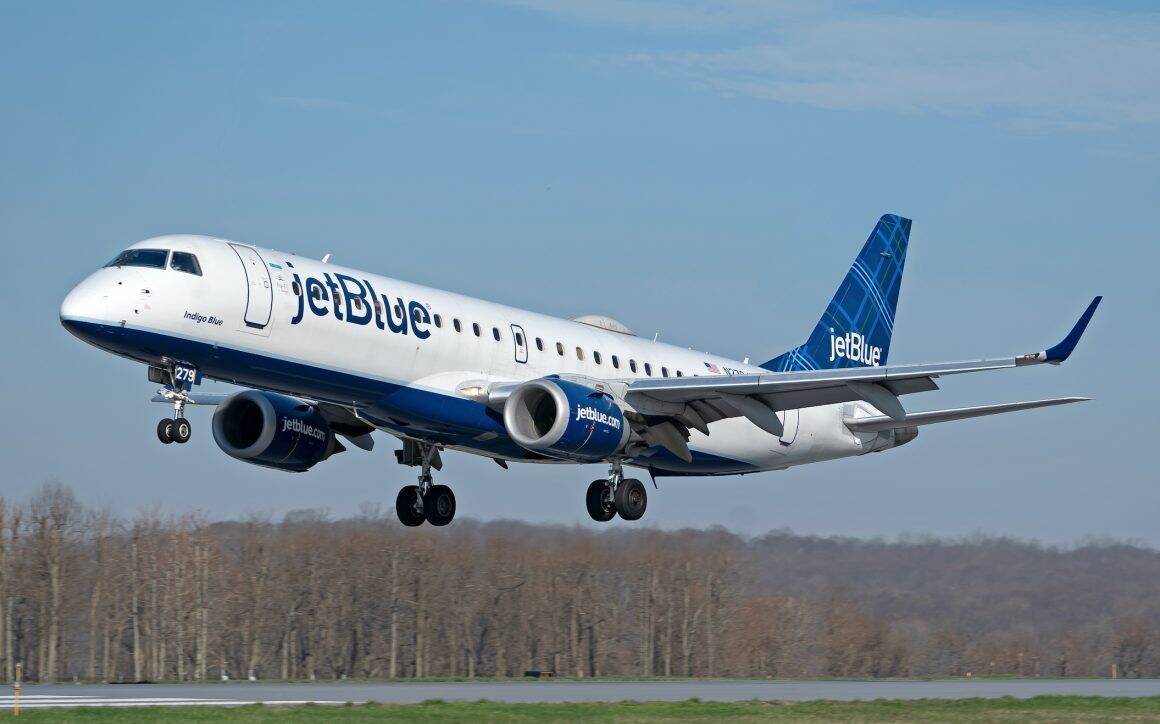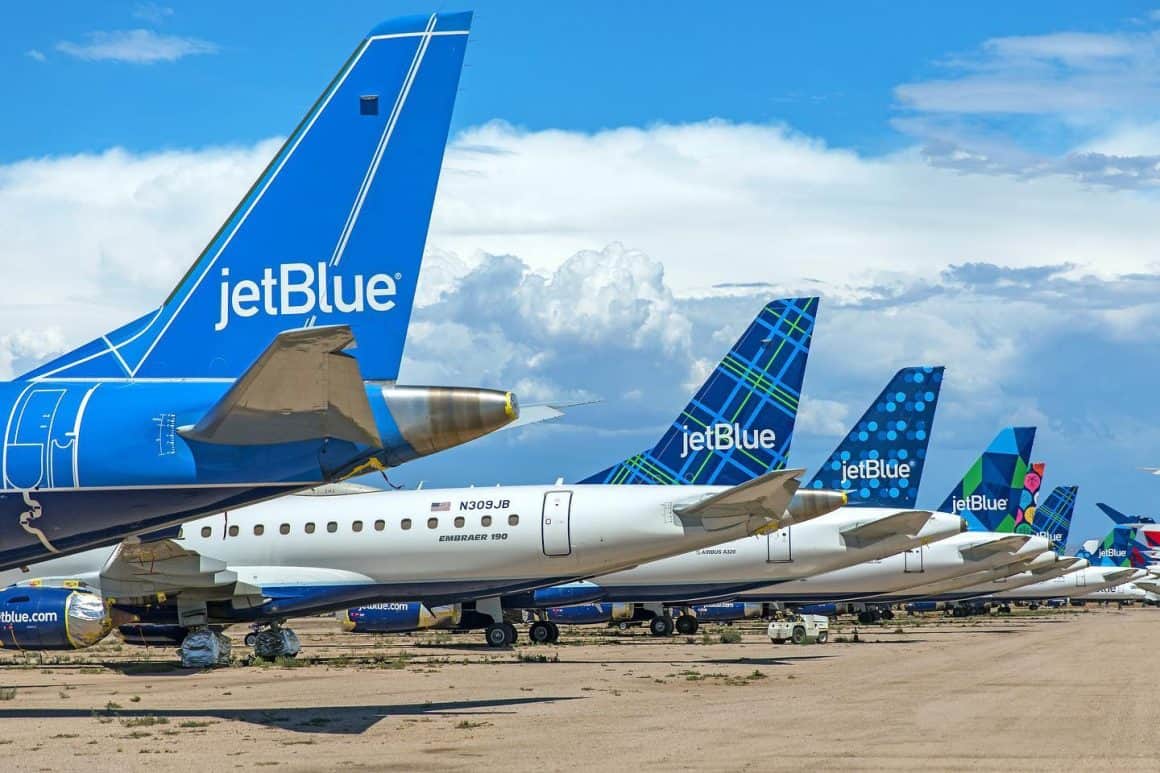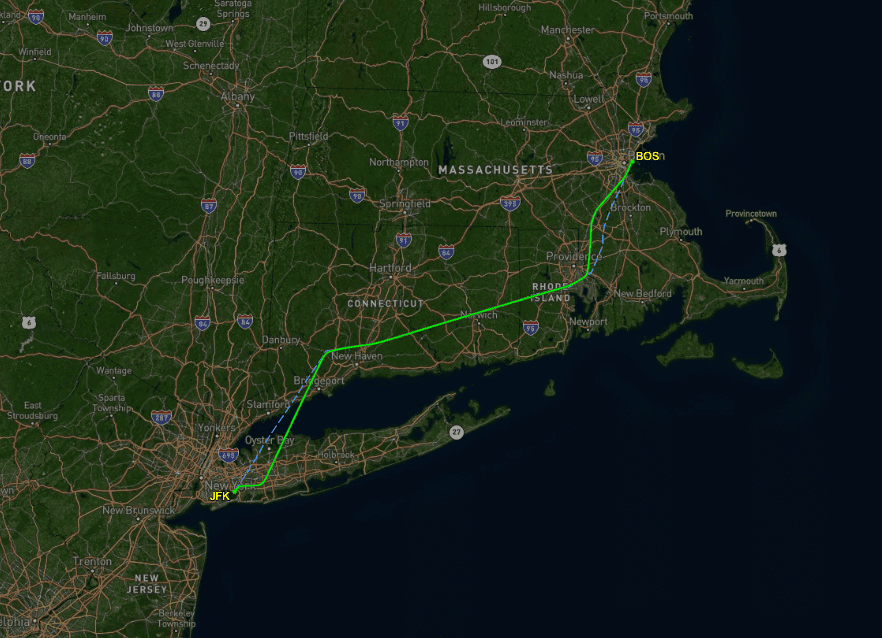- The last flight lands: JetBlue retires its final E190 with a JFK–Boston service, closing nearly 20 years of operations.
- A small jet, a big legacy: The E190 shaped JetBlue’s network and gave passengers mainline comfort on short-haul routes.
- Still flying strong abroad: From Alliance Airlines in Australia to KLM Cityhopper in Europe, the E190 remains a global workhorse.
- A new US chapter begins: Less than 24 hours after JetBlue said goodbye, Avelo Airlines placed a massive order for the E195-E2, marking the type’s American debut.
JetBlue Airways closed the book on an era this week.
Flight 190, operating on Tuesday, 9 September, from John F. Kennedy International Airport (JFK) to Boston Logan International Airport (BOS), touched down and marked the official retirement of the Embraer E190 from JetBlue’s fleet.
On a beautiful early September morning, the ceremonial final flight departed JFK at 1240 local time and arrived at BOS at 1338 local time–nearly 30 minutes early. In a fitting tribute to the type, the flight was piloted by Warren Christie, JetBlue COO and pilot, who also flew the inaugural E190 flight for JetBlue two decades ago.
The retirement of the E190 was a bittersweet moment for JetBlue. The type was the carrier’s oldest and smallest aircraft, but it was important in shaping its early identity, expanding its reach, and proving that “low-cost” and “premium” could coexist on short-haul routes.
And yet, less than 24 hours after JetBlue said goodbye, another US carrier signaled a different future. Avelo Airlines announced a blockbuster order for the Embraer E195-E2, becoming the first American airline to commit to the next generation of E-Jets. For Embraer, it was the break they’ve been waiting for for years: the E2 is coming to America.
A Brazilian Design That Redefined the Middle Market

When Embraer launched the E190 program in the late 1990s, it sought to fill the wide gap between regional jets and narrowbodies. Instead of stretching the ERJ-145, the Brazilian manufacturer went clean-sheet, unveiling the E-Jet family at the 1999 Paris Air Show. The 100-seat E190 emerged as the centerpiece, equipped with a stretched fuselage, twin General Electric CF34-10E turbofan engines, and a range up to 2,819 nautical miles.
The type first flew in March 2004 and entered service a year later after FAA certification. The E190’s formula—mainline comfort in a right-sized package—caught on quickly. The 2-2 cabin, absence of middle seats, and generous overhead bins won over passengers, while its economics appealed to airlines targeting underserved markets.
Globally, the aircraft became a commercial success, with more than 500 delivered. The 566th, 567th, and 568th airframes were delivered to Egyptian wet-lease carrier, CIAF Leasing, in December 2022. Its later successor, the E2 series, brought geared turbofans and 20% better efficiency. However, the original E190, now two decades old, continues to serve as a reliable backbone for many international operators.
JetBlue and the E190: A Partnership That Paid Off

No US airline was more closely associated with the E190 than JetBlue. In 2003, the young New York carrier stunned the industry with an order for 100 of the type, making it the global launch customer. Founder David Neeleman envisioned a jet that could open secondary markets without sacrificing JetBlue’s signature product.
The first E190 joined the fleet in September 2005. Two months later, it launched scheduled service between BOS and JFK—the same route that marked its retirement this week. The milestone flight was a fitting bookend to two decades of service.
Configured with 100 leather seats, live TV, free Wi-Fi, and 32 inches of pitch, the E190 allowed JetBlue to grow beyond major trunk routes. It became the backbone of service to mid-sized cities like Rochester, Buffalo, and Burlington, while also flying shuttles in the congested Northeast corridor. At its peak, more than 60 E190s operated over 100 daily flights, introducing millions of travelers to JetBlue’s distinct onboard product.
“The E190 was instrumental in our early years and proved to deliver on critical connectivity in short-haul markets, allowing us to grow into new regions, especially in our New York and Boston focus cities,” said Christie. “It is an honor to pilot our final E190 revenue flight.”
It is an honor to pilot our final E190 revenue flight.
Warren Christie, JetBlue COO and captain of both the inaugural and final JetBlue E190 flight
The jet earned a reputation among pilots and crews for solid handling and quick turnarounds. Its fly-by-wire controls and Honeywell Primus Epic avionics made it well-suited for the busy Northeast corridor. Many pilots described the E190 as “a pilot’s airplane”—responsive in congested airspace, nimble on approach, and efficient on the ground.
Still, the aircraft was not without headaches. Early CF34 engine issues required fixes, and maintenance costs mounted as the fleet aged into its mid-teens. Even so, the type’s contribution to JetBlue’s growth–not to mention its reputation for bringing humanity back to air travel–remains undeniable.
Why Retire the E190 Now?

The decision comes down to economics and efficiency. Fuel costs have climbed, older airframes need more upkeep, and replacement parts for the CF34 engines are harder to come by. On a per-seat basis, the E190 burns roughly 25% more fuel than its replacement, the Airbus A220-300.
JetBlue is now focused on a simplified fleet of Airbus aircraft. The A220-300, with 140 seats, longer range, and lower emissions, is already taking over many of the routes the E190 once flew. With more than 50 delivered so far, the transition is well underway. Beyond fuel savings, the move reduces pilot training complexity, streamlines maintenance, and positions JetBlue for growth across both short-haul and transcontinental markets.
Selling off retired E190s to lessors and aftermarket specialists has also unlocked value. Firms like Azorra and Werner Aero are acquiring frames and engines, many of which will find second lives overseas.
In addition to its 52 A220-300s, JetBlue operates 125 A320-200s, 63 A321-200s, and 37 A321neos.
The E190’s Place in the Aviation World in 2025

JetBlue’s retirement of the E190 closes the book on the type’s US mainline story. Once a familiar sight shuttling between New York, Boston, and dozens of secondary cities, the aircraft has now vanished from the scheduled fleets of major American carriers. Regional affiliates still operate the smaller E170 and E175, constrained by scope clauses, but the 100-seat E190 has slipped quietly into the margins.
Breeze Airways, which leaned on ex-Azul examples in its startup years, has already shifted its attention to the Airbus A220. A few E190s live on in charter service or as VIP Lineage 1000 conversions, but their heyday in the US is clearly over.
The picture looks different abroad. Alliance Airlines keeps dozens flying on regional contracts in Australia, many sourced from JetBlue and other US retirements. Aeroméxico Connect continues to rely on its fleet for domestic connectivity, while KLM Cityhopper and Airlink in South Africa use the type to stitch together busy short-haul networks. China and Latin America also remain strongholds, where the E190’s size and economics are still well-matched to market demand.
Meanwhile, the next generation is taking root. The E2 family—most visibly with Porter Airlines in Canada and Azul in Brazil—builds on the original E-Jet’s strengths, offering better fuel efficiency and longer range while keeping the comfort and feel of a larger airplane in a smaller frame. And, the massive deal announced one day after JetBlue’s final E190 flight, the E195-E2 will be making its debut in the United States very soon.
Avelo’s landmark order is for 50 E195-E2s, with rights to 50 more worth nearly $4.4 billion at list prices. Deliveries are set to begin in 2027, Deliveries will start in 2027, making Avelo the launch customer for the E2 family in America. For Embraer, it’s a much-welcomed sign that while the first-generation E190 is fading at home, its successor is finally making inroads.
One Door Closes…Another One Opens

JetBlue’s E190 era has officially come to an end. But its impact is unmistakable: it opened new markets, gave the airline flexibility when it was most needed, and delivered a passenger experience that often felt bigger than the plane itself.
As the final jets head off to desert storage, they leave behind a lasting legacy: a small jet that made a big impact…even as the next generation prepares to take flight.

